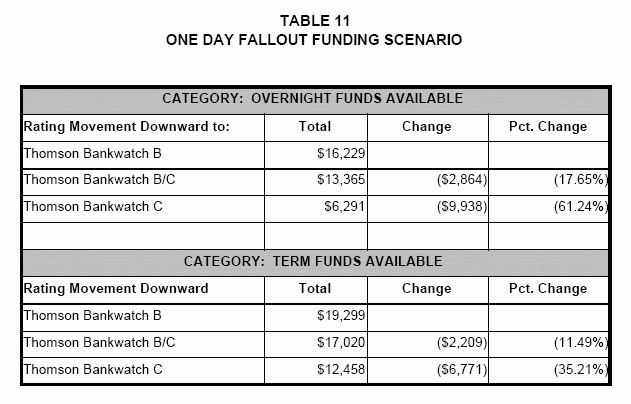Liquidity Risk Management Procedures
Category: Risk Management in Banking
Two different notions of liquidity risk have evolved in the banking sector. Each has some validity. The first, and the easiest in most regards, is a notion of liquidity risk as a need for continued funding. The counterpart of standard cash management, this liquidity need is forecastable and easily analyzed. Yet, the result is not worth much. In today’s capital market banks of the sort considered here have ample resources for growth and recourse to additional liabilities for unexpectedly high asset growth. Accordingly, attempts to analyze liquidity risk as a need for resources to facilitate growth, or honor outstanding credit lines are of little relevance to the risk management agenda pursued here.
The liquidity risk that does present a real challenge is the need for funding when and if a sudden crisis arises. In this case, the issues are very different from those addressed above. Standard reports on liquid assets and open lines of credit, which are germane to the first type of liquidity need, are substantially less relevant to the second. Rather, what is required is an analysis of funding demands under a series of «worst case» scenarios. These include the liquidity needs associated with a bank-specific shock, such as a severe loss, and a crisis that is system-wide. In each case, the bank examines the extent to which it can be self-supporting in the event of a crisis, and tries to estimate the speed with which the shock will result in a funding crisis.
Reports center on both features of the crisis with Table 11 illustrating one bank’s attempt to estimate the immediate funding shortfall associated with a downgrade. Other institutions attempt to measure the speed with which assets can be liquidated to respond to the situation using a report that indicates the speed with which the bank can acquire needed liquidity in a crisis. Response strategies considered include the extent to which the bank can accomplish substantial balance sheet shrinkage and estimates are made of the sources of funds that will remain available to the institution in a time of crisis. Results of such simulated crises are usually expressed in days of exposure, or days to funding crisis.
Such studies are, by their nature, imprecise but essential to efficient operation in the event of a substantial change in the financial conditions of the firm. As a result, regulatory authorities have increasingly mandated that a liquidity risk plan be developed by members of the industry. Yet, there is a clear distinction among institutions, as to the value of this type of exercise. Some attempt to develop careful funding plans and estimate their vulnerability to the crisis with considerable precision. They contend that, either from prior experience or attempts at verification, they could and would use the proposed plan in a time of crisis. Others view this planning document as little more than a regulatory hurdle. While some actually invest in backup lines without «material adverse conditions» clauses, others have little faith in their ability to access them in a time of need.

